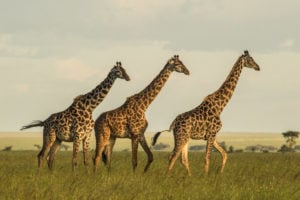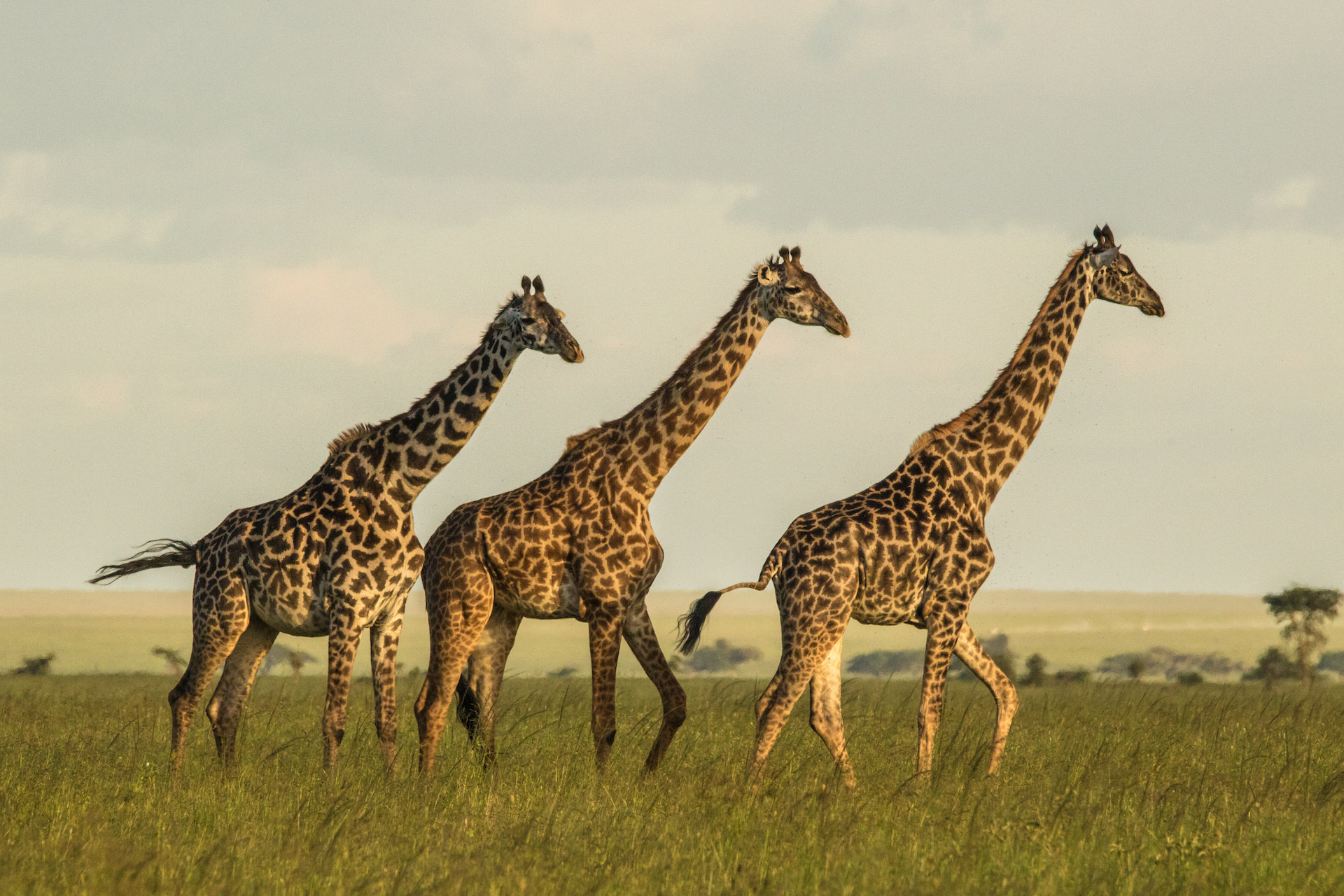- Adult female giraffes who spend time in larger groups with other familiar females live longer than less sociable individuals.
- The effects of sociability on survival outweigh other factors such as environment or human presence, a study of giraffes in Tanzania conducted by the University of Zurich and Penn State has shown.

An iconic but endangered mega-herbivore
Giraffes are beloved around the world, but their populations are declining across Africa. They are now vulnerable to extinction. A research team from Penn State and University of Zurich have been studying giraffes in the Tarangire region of Tanzania since 2012, with the goal of learning what helps or hurts giraffes to ensure that people and giraffes can co-exist together.
Gregariousness leads to better survival
In the new study, the team documented the social behaviors of the wild free-ranging giraffes using network analysis algorithms similar to those used by big-data social media platforms. The biologists examined the relative effects of sociability, the natural environment, and human factors on survival of this mega-herbivore. Giraffe group formations are dynamic and change throughout the day, but adult females maintain many specific friendships over the long term. The study showed that adult females that tended to be in groups with more other familiar females—which is called gregariousness—had better survival than more socially isolated individuals. Moreover, their gregariousness was more important than vegetation and nearness to human settlements. “We concluded that friends matter to female giraffes,” said Monica Bond, lead author of the study published today in Proceedings of the Royal Society B.
The benefits of many friends
Aside from poaching, the main causes of adult female giraffe mortality are likely to be disease, stress or malnutrition, all of which are interconnected stressors. “Social relationships can improve foraging efficiency, and help manage intraspecific competition, predation, disease risk and psychosocial stress,” says University of Zurich professor Barbara König, senior author of the study. Female giraffes may seek out and join together with an optimal number of other females in order to share and obtain information about the highest-quality food sources. Other benefits to living in larger groups might be lowering stress levels by reducing harassment from males, cooperating in caring for young, or simply experiencing physiological benefits by being around familiar females. The study also finds that females living closer to towns had lower survival rates, possibly due to poaching.
Social habits similar to humans and primates
Humans and non-human primates like chimpanzees and gorillas also benefit from greater sociability, not by living in small, closed groups with just a few friends but by being more socially connected within a larger community of associates. Having more social ties directly improves our health and longevity. This has been shown often in humans and some primates but this is the first time it was demonstrated to be true in giraffes.
Understanding the importance of giraffe social relationships to their survival and fitness helps us to develop better conservation strategies that avoid disrupting those relationships.
Citation:
M. L. Bond, D. E. Lee, D. R. Farine, A. Ozgul, and B. König. 2021. Sociability increases survival of adult female giraffes. Proceeding of the Royal Society B. DOI: 10.1098/rspb.2020.2770


Love it! As the pandemic, I think, is demonstrating, true for our species too.